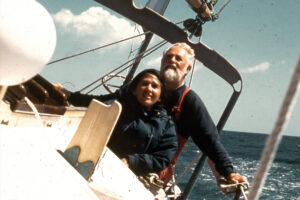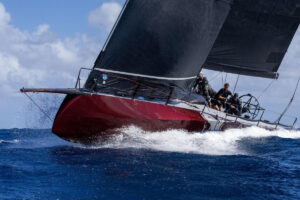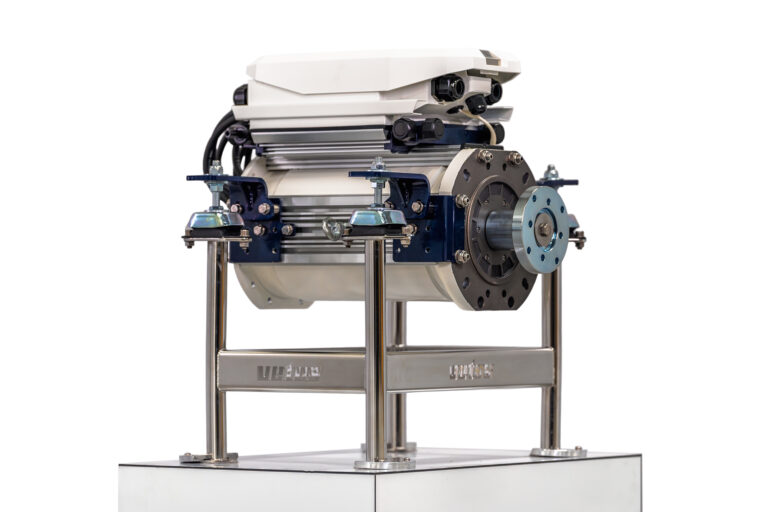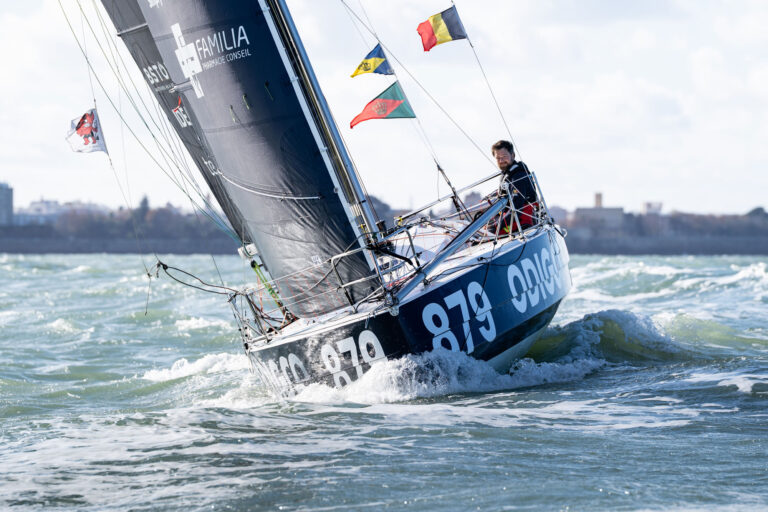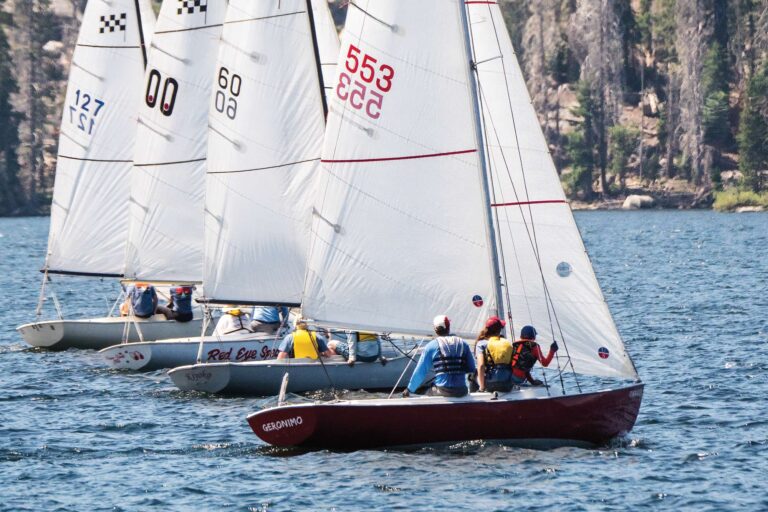
It’s the end of another sailing season, and as you haul the boat and begin its winter layup, you have reminders aplenty that the 30-year-old auxiliary engine is getting tired. The intermittent no-start condition, oil and coolant leaks, and excessive smelly exhaust smoke are finally getting to you. As you prepare to change the oil and run some antifreeze through the block, it occurs to you that it might be time for an upgrade. What should you consider? What are your choices? What are the pitfalls? Follow along and we’ll set you straight.
First off, if your sailboat’s auxiliary engine is truly approaching its third decade (or older), you need to understand that there may be significant components besides the engine that are probably going to need replacement. Things like the exhaust system, primary engine wiring harness, instrumentation, engine- and transmission-control cables, fuel tanks, transmission, shaft, cutlass bearing and prop are all suspect and need to be carefully evaluated. When looking at your options, be sure to factor all these additional items into your budget projection. Your new engine is just a part of the big picture.
Need More Power?
Back in the 1970s and ’80s, a lot of new sailboats were produced with engines that, frankly, were a bit underpowered. I know; I owned one. It was fine until I hit a head-on current in a narrow channel; I clearly remember moving along at a half-knot under full power. This scenario repeated itself all too frequently in some of the other New England waters I cruised regularly. More get-up-and-go would have been greatly appreciated.
So if you’ve experienced similar frustration, now is the time to consider more horsepower. How much is enough? You’ll need to do a bit of research to determine the best possible choice.
Consider that a sailboat is just like an airplane that stays at sea level. Power-to-weight ratios do matter: The heavier the plane’s engines, the more thrust it needs to gain altitude. The whole idea is to find the ideal balance. Simply replacing your 25- or 30-horsepower auxiliary engine with a 75-horsepower turbocharged model might sound good, but there’s more to consider than pure muscle.
First off, the 75-horsepower engine might simply be too heavy for your boat. Next, since most cruising sailboats have displacement hulls, things like waterline length and actual weight count considerably, just as they do for airplanes. With a full-displacement hull form, you can squeeze only so much speed out of that waterline length. Adding more horsepower represents a significant economic waste.
RELATED: Monthly Maintenance: Getting Back Aboard
Besides weight, physical dimensions are of paramount importance. Is it possible to get a motor-mount configuration that will work with your choice of marine diesel engine and the existing engine bed in the boat? What about service-point access? The water-pump impeller might appear to be easily replaceable on your new engine when you look at it at the boat show, but what about when it’s been bolted into place? There’s nothing worse than an engine part you simply can’t reach when you need to in a hurry. And will your engine-room space require additional modifications to fit a new muffler, filter location, shaft coupler, etc.?
Remember that marine diesel engines require a considerable amount of fresh air to run properly. Especially if you plan to increase horsepower, you may need to add engine-room ventilation to keep that new power plant from suffocating.
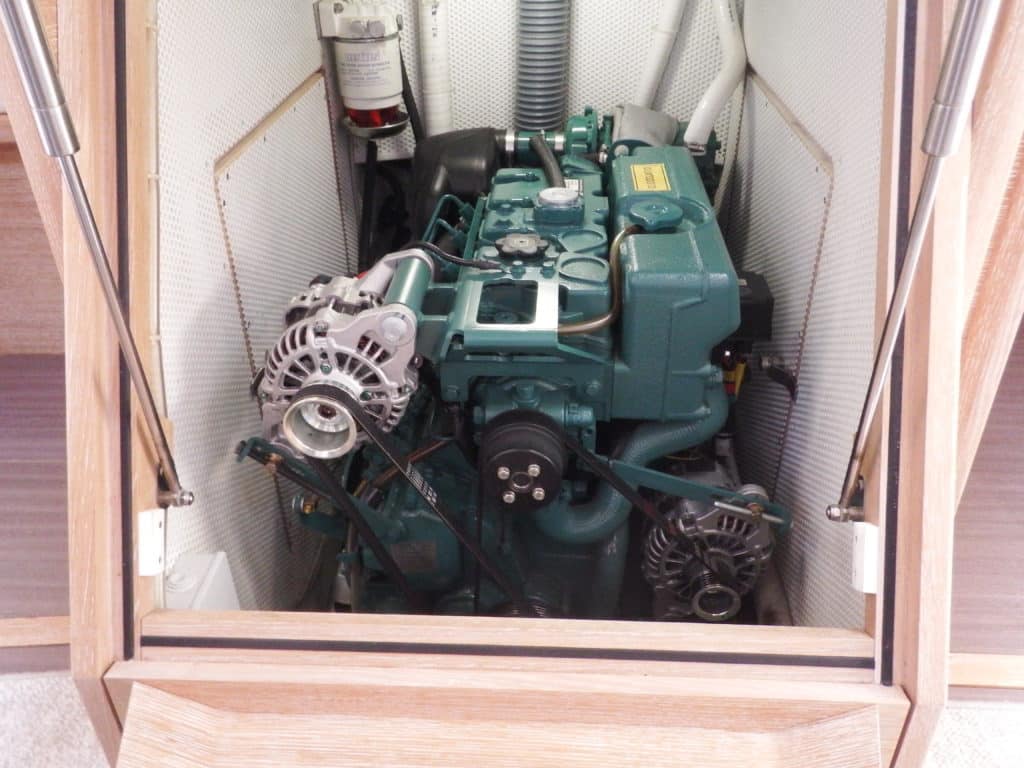
Common-Rail Marine Diesel Engines
In recent years here in the States, officials at the Environmental Protection Agency, along with their counterparts in Europe, have been working hard to create regulations that do two things: clean up diesel fuel by reducing sulfur content significantly, and eliminate emissions from the diesel combustion process.
EPA mandates now require what are described as “Tier 3” emissions standards for boats sold in the U.S., regardless of where they are made. The effect of this became evident this past fall, when I was one of the judges for Cruising World’s Boat of the Year competition. Of the 24 boats we tested and compared, half were equipped with electronically controlled “common-rail” super-high-pressure fuel-injection systems. The new diesels use a common chamber that is often, but not always, integrated into the engine’s cylinder head, and which holds fuel for all the cylinders in the engine. The fuel is pressurized by a pump that operates at much higher pounds-per-square-inch than those used in older systems, which sent fuel from the fuel pump directly to individual fuel injectors at each cylinder.
In older marine diesel engines, fuel pressure typically ranged from a low of about 1,500 psi to close to 4,000 psi. In these systems, the injectors opened when fuel was compressed to what is referred to as the injector “pop” pressure.
In common-rail diesel engines, injectors are still used, but the pressure in the rail chamber is on the order of 15,000 psi to 20,000 psi. Injectors, meanwhile, are controlled by electronic solenoid valves, whose opening and closing time is controlled by an onboard CPU that adjusts the duration of each burst of fuel based on data inputs like temperature, engine load and rpm.
Here’s the good news: You’ll never have to bleed air out of these systems, as they are completely self-bleeding. With older marine diesels, bleeding was a fairly common task required after fuel-filter changes or running out of fuel. This problem is simply eliminated with the common rail. All that’s needed is to crank the engine, and the high-pressure pump will take care of the rest. Now here’s the bad news: The biggest fear with these engines is a problem with the onboard electronics. Rather than carrying spare fuel injectors, long-distance cruisers may now want to carry spare injectors and a spare engine-control CPU.
The hope, of course, is that the reliability of the engines will negate the need for fuel-system maintenance; routine fuel- and oil-filter changes can still be done by the owner. Problems will arise, though, when an engine doesn’t perform as it should. These are complex machines, and without the proper skills and equipment (diagnostic computers and the ability to read error codes), a boat owner probably won’t find a way to sort things out as he might have with a traditional marine diesel.
The Kiwi delivery skipper was aboard one of the boats I boarded during the boat show in Annapolis. It was a multihull, powered by a pair of common-rail diesels, and I asked the obvious question: How have these engines been, in your experience? His answer was telling. He said he was glad to have two engines on these catamarans because usually one of the two will have problems during the delivery — problems that he can’t solve. If you’re contemplating a voyage on a single-engine monohull, you would probably find that response unnerving, to say the least.
Rebuild or Replace the Auxiliary Engine?
As I stated earlier, the simple solution to your power needs may not be to replace the 25-horsepower with the beefy 75-horsepower motor. Depending on your boat and circumstances, you may still be able to get a currently compliant (EPA-wise) engine in the lower-horsepower range that still uses older technology. The dividing line at present is found at about 50 horsepower, depending on the manufacturer.
If you think you need more than that, you’re probably going to end up with an electronically controlled diesel engine with all the fixings — and a major series of modifications to your old boat will be needed to make the change.
If that’s the case, the possibility of rebuilding your existing sailboat auxiliary engine may make better economic sense, but only if the circumstances allow it. If you are merely trying to get a boat refreshed for resale within a year or so, the overhaul of your existing engine makes some sense. A rebuild typically will save several thousand dollars, compared with a full-on replacement. But you’ll only be able to enjoy a very limited warranty on the work, compared with the two- to five-year peace of mind that comes with a new marine diesel’s warranty. Further, realize that as the engine ages, parts become increasingly difficult to find; next time a repair becomes necessary, it may be impossible. If you’re planning on keeping the boat, in my view, a repower is the only intelligent solution.

Marine Diesel Engine Comparison
A search for sailboat auxiliary diesels yields results that would indicate there are really only seven brands: Yanmar, Volvo Penta, Beta, Westerbeke, Perkins, Vetus and Nanni, with Yanmar and Volvo Penta maintaining significant market share. Of the 24 sailboats in our BOTY mix this year, 11 were powered with Yanmars and 10 with Volvo Pentas. We had one boat with twin 20-horsepower Honda outboards, one with twin Nanni diesels, and one sailboat with an electric drive. You’ll probably read in online forums that most marine diesels are made by either Kubota or Mitsubishi, but that’s not quite accurate.
Yanmar produces all of its engines, and Volvo Penta manufactures its larger ones in-house. Smaller Volvos are produced by Perkins and given a Volvo-green paint job. Understand that Perkins uses the Kubota diesel as its base engine and then marinizes it to its own specifications. Perkins, which is a subsidiary of Caterpillar, is based in the United Kingdom, but also has some distribution here in the United States.
Nanni, a French company, uses Kubota, Man, Toyota and John Deere engines as its bases, depending on the horsepower. Vetus, with very limited U.S. exposure, has used Kubota, Mitsubishi and other base engines over the years. I can remember vividly a customer of mine years ago with a Vetus that used a four-cylinder Peugeot diesel as its base.
The bottom line today is that the volume of engines produced for the marine industry is quite small by industrial standards. Globalization has made it easy for manufacturers to source base engines for marine use that might also be used in tractors, generators and other relatively small machinery in both on- and off-road applications. With that in mind, it pays to check out the dealer and distributor network from both a regional and international perspective before you make a final choice. Beta, for example, has a significant dealer and parts network here in the U.S., so if you plan on cruising locally, parts and repairs should be easy enough to find. Beta, Yanmar, Volvo Penta and Westerbeke also offer a variety of engine-mount options to accommodate the various footprints that installers may encounter.
By comparison, if you opt to go with a Nanni, here in the States at least, repairs might not be that simple. I needed no less than 30 minutes and three phone calls to the Florida distributor to find out what the U.S. warranty covers. I still don’t know. I found the Australian distributor’s website, which mentions a two-year “plus one” guarantee, but the definition of “plus one” wouldn’t upload. On sailing forums, I found quite a few folks who complained about hard-to-find and expensive parts. It seems when Nanni marinizes, say, a Kubota engine, things like air-intake filters and other common service items are proprietary, and so replacements can’t necessarily be purchased at the local Kubota tractor dealer on some remote out island. Since the company is based in Europe, service and parts may be more available there.
For those who use their boats only occasionally and close to home waters, service and parts availability may not be a big enough issue to outweigh other considerations, such as cost. But if long-distance cruising is in your plans, it pays to carefully assess service and parts availability from a global perspective.
As for your modern electronic common-rail diesel engine, if that’s the way you must go, at the very least, stick with one of the two major manufacturers, Volvo Penta or Yanmar — and even then, good luck if you get hit by lightning halfway to Tonga. You’ll be hard pressed to find a service technician in a timely fashion, so carrying spare electronic components should be a serious consideration.
And a final note: For those of you who are on the last go-round with the venerable Universal Atomic Four gasoline engine, it’s time to switch to a diesel, if for no other reason than the continued availability of parts. If you want to stick with the Universal brand, give Westerbeke a call; the company still supplies two Universal engine models — the M3-20 B and the M-25 XPB — that are bolt-in replacements for the gas units. By the way, these are both Kubota-based engines.
Ed Sherman is the vice president of the American Boat & Yacht Council and heads its education division. He is a frequent CW Boat of the Year judge.

